Daggett, California
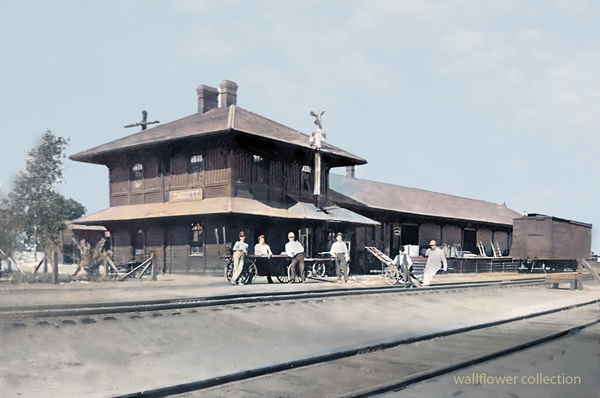
Daggett Depot
Nestled in the heart of the Mojave Desert, Daggett, California, is a small but historically rich community that played a pivotal role in the region's development. Although it's a quiet town today, Daggett's past is filled with booms and busts, driven by mining, railroads, and the rugged determination of those who carved out a life in the desert.
Daggett's recorded history begins long before the town itself, with Spanish missionary Francisco Garces passing through in 1776, documenting Native American settlements along the Mojave River. In the decades that followed, the region became part of the Old Spanish Trail, a vital trade route connecting California to Santa Fe. By the 1850s, the Mojave Road, a military and pioneer route, passed nearby, and conflicts between settlers and Indigenous tribes led to the establishment of Camp Cady, a military post protecting travelers.
Despite this early activity, the area remained largely undeveloped until the late 19th century, when the discovery of silver in the Calico Mountains changed everything. The town of Calico boomed in 1881, attracting thousands of miners, and Daggett became its supply hub. The Southern Pacific Railroad established a station there in 1882, ensuring Daggett's importance in the region. Soon after, it was renamed for John Daggett, California's lieutenant governor.
During its peak, Daggett was a lively center of commerce, serving not only Calico but also smaller mining camps scattered throughout the desert. Supplies, ore, and workers flowed through the town, and businesses flourished. By 1888, the Calico Railroad was built, linking the mines directly to Daggett's railhead, further cementing its status as a desert transportation hub.
However, the mining boom was short-lived. By the early 1890s, silver prices plummeted, Calico's fortunes waned, and Daggett faced economic decline. Yet, another mineral-borax-offered a new lifeline. Francis Marion "Borax" Smith, a key figure in the borax industry, purchased mines near Calico and developed large-scale operations. The famous 20-mule team wagons, often associated with Death Valley, actually gained much of their fame hauling borax from Borate, just outside Daggett, to the railhead. For years, these massive wagons transported tons of borax, cementing Daggett's role in the industry. In 1898, the Borate and Daggett Railroad replaced mule teams, bringing an end to their legendary desert runs.
As the 20th century began, Daggett's significance waned once more. The railroad yards moved to Barstow, and mining continued to decline. However, Daggett never became a complete ghost town. The arrival of Route 66 in the 1920s brought travelers through town, keeping local businesses alive. The quirky Ski Lodge House, built as a real estate office, still stands as a reminder of efforts to turn Daggett into an agricultural center. Though those dreams never materialized, the town remained a small but enduring presence in the Mojave.
During World War II, Daggett found new purpose as military activity increased in the desert. The Daggett Garage, originally built in the 1880s as a rail repair shop, became a mess hall for soldiers guarding the railroad bridges. After the war, the garage was taken over by the Fouts brothers--who ran an auto repair shop there for decades.
Today, Daggett is a quiet but resilient community, its past still visible in its historic structures. The Stone Hotel, once a stopover for notable figures like Death Valley Scotty, John Muir, and Borax Smith, still stands, albeit in a reduced form after multiple fires. The Daggett Pioneer Cemetery holds the graves of early settlers, and the remnants of the old blacksmith shop, once run by the pioneering Alf family, recall the town's industrious past.
Though the bustling days of silver booms, borax wagons, and railroad expansions are long gone, Daggett remains a symbol of the Mojave Desert's history. It tells the story of pioneers, miners, and dreamers who braved the harsh landscape, leaving behind a legacy etched in the desert sands.
the town of Calico
Southern Pacific Railroad
borax
10 stamp mill
Mojave River
20-mule teams
Furnace Creek Ranch
Death Valley
Francis Marion "Borax" Smith
Harmony
San Bernardino County
National Old Trails
Route 66
Southern Pacific
Santa Fe
Borax
Chronology
Daggett Weather
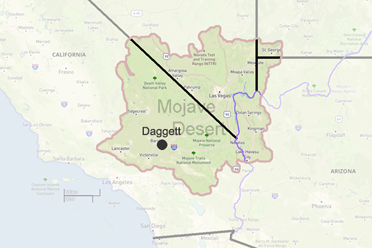
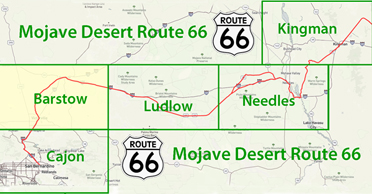
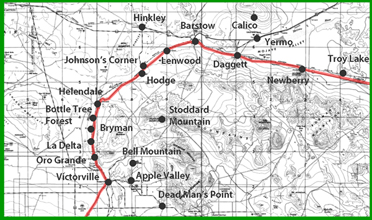
Desert Market
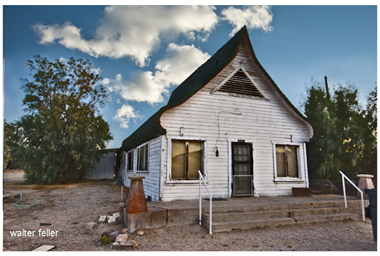
Inspection station residence - 2013
Daggett Garage
Daggett Ditch
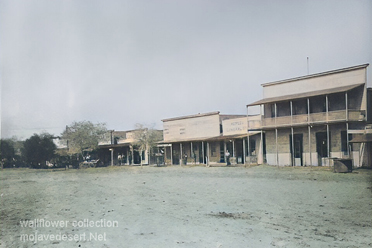
Stone Hotel
Pioneer Cemetery
Minneola
Borate & Marion
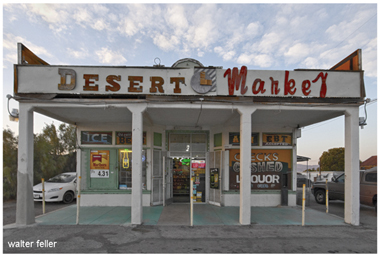
Desert Market
v2.jpg)
Alf's Blacksmith Shop
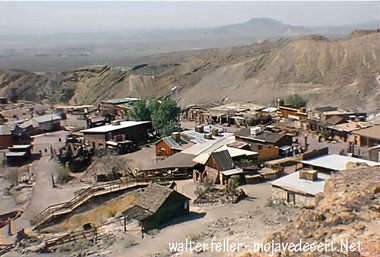
Calico Mining History
A railroad named the Borate & Daggett was laid into Mule Canyon in 1898. ...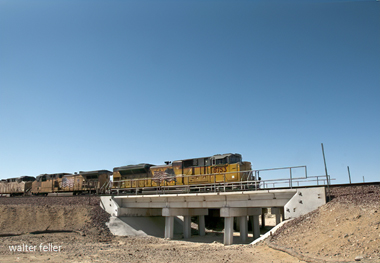
Daggett Misc. Gallery
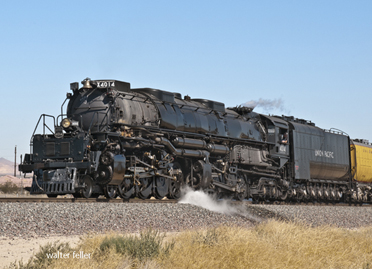
Trans-Mojave Desert Railroad
-
Daggett. Here is an old historical town, older than Calico. In 1880 to the railroad was constructed through the community and it was named after Lieut. Gov. John L. Daggett the following year. When silver and borax mining activities ceased, it became dormant. In 1908 it was the locale for Western movies. Strategically located on Highway 66 and served by the Santa Fe and Union Pacific, it is obvious that Daggett is enjoying a surging rebirth, all the more pronounced because of the close proximity to the US Marine Corps Supply Center and the Daggett Airport.
~ Heritage of the Mojave River Valley